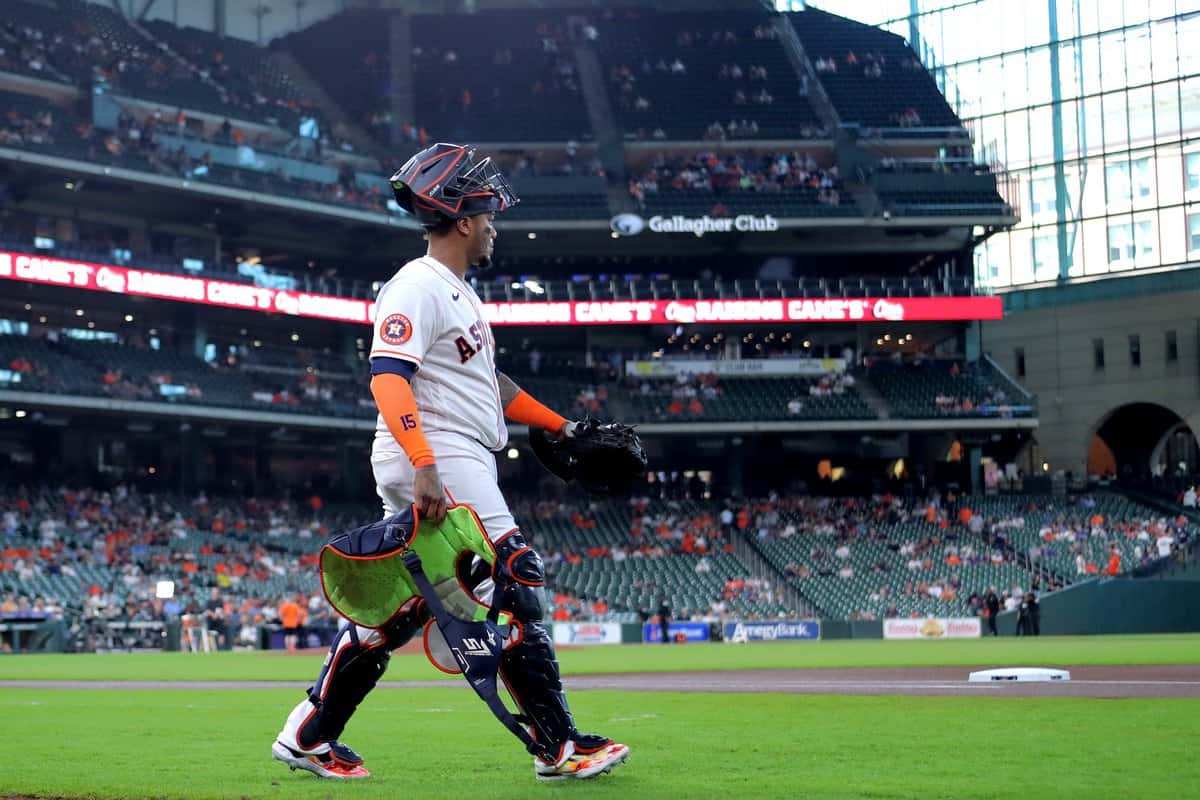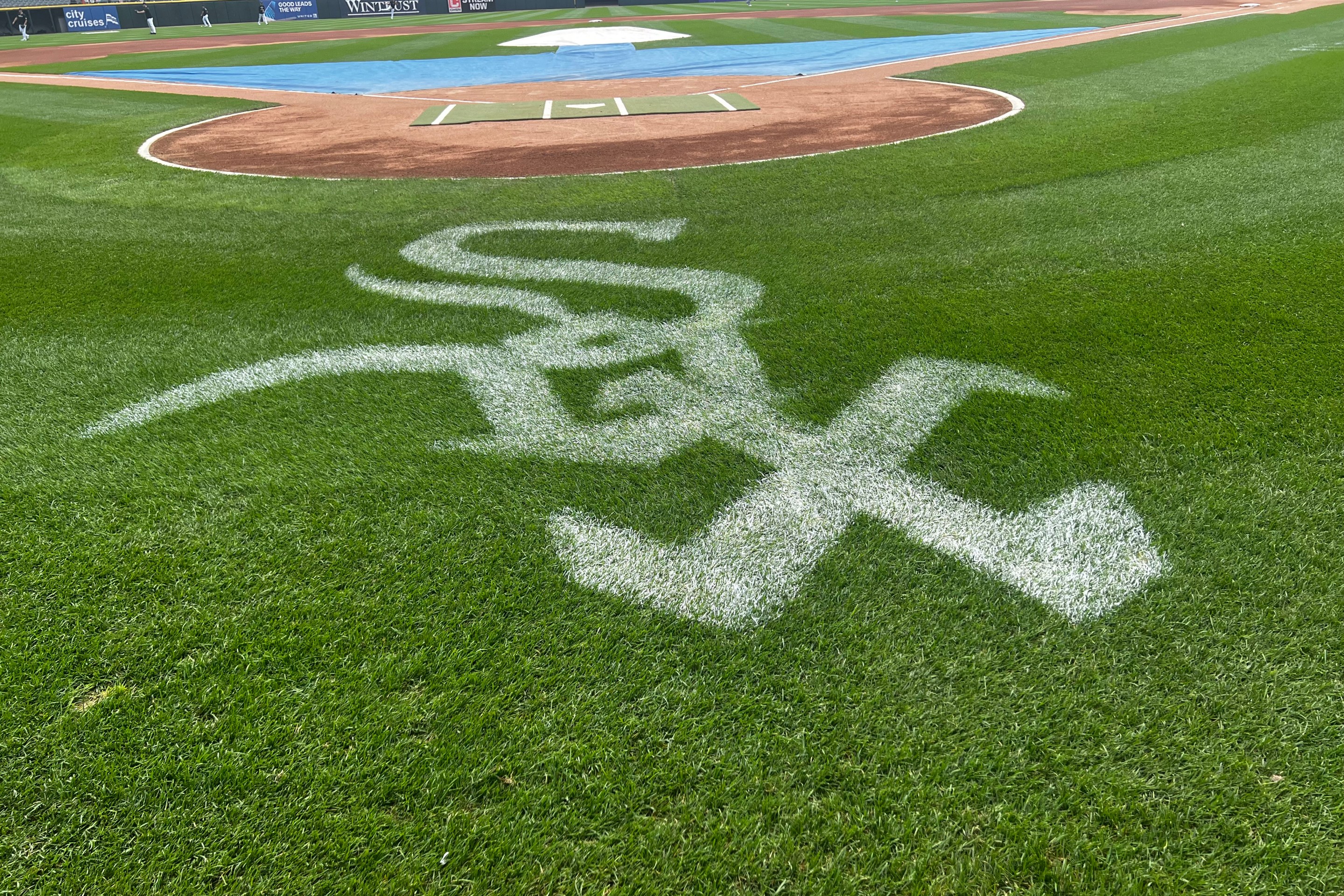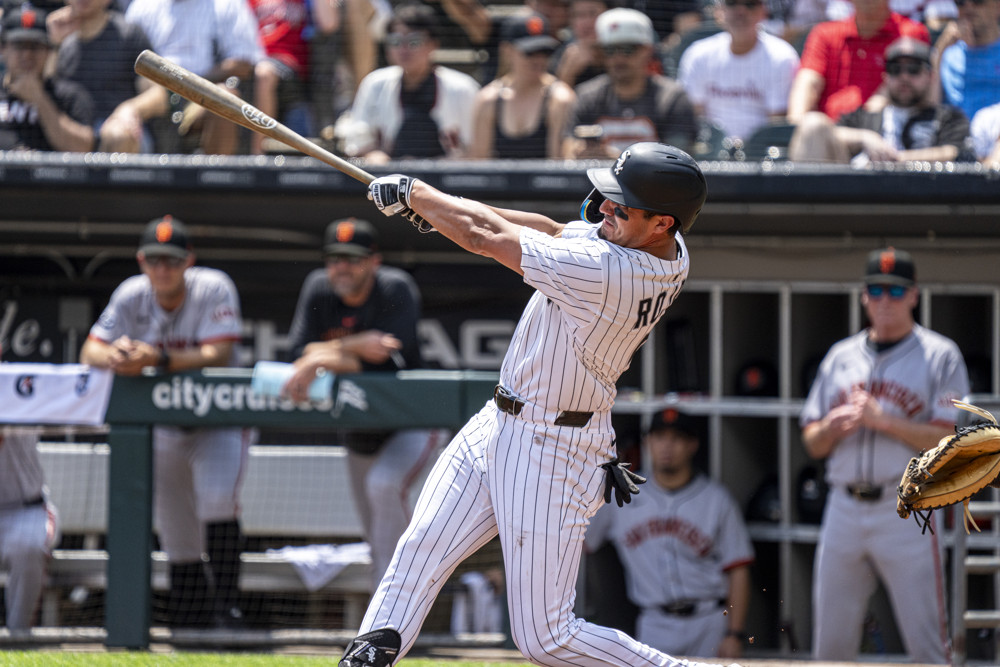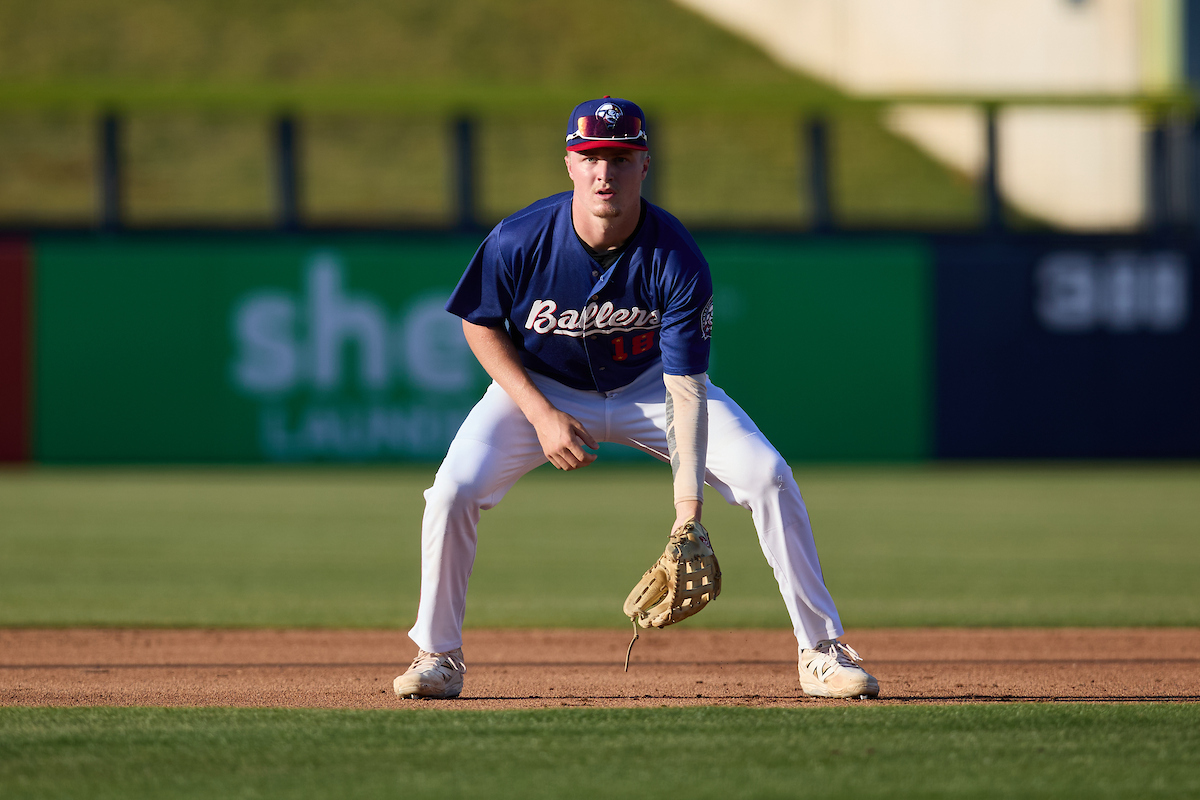Martín Maldonado is officially a White Sox. About a week and a half after numerous reporters broke the news of a one-year, $4 million agreement with a club option for 2025, the Sox added Maldonado to the 40-man roster on Friday, designating Zach Remillard for assignment in order to make room.
Maldonado also became the third member of the 2019 Royals to join the 2024 White Sox, alongside Nicky Lopez and Tim Hill. Brett Phillips, whom the Sox signed to a minor-league deal this past week, might be a fourth, and Whit Merrifield lingers as a free agent. Pedro Grifol was also a coach on that team, which helps explain some of the fascination.
It makes for easy jokes and readymade valid criticism, but beyond reflexive royalphobia, it's worth mentioning Maldonado's ties to that particular team because it's the closest parallel to what he's joining with the 2024 White Sox, all the way down to the idea that many people had already penciled in Salvador Perez for the position.
Maldonado joined those Royals in spring training, signing a one-year, $2.5 million deal on March 9 after Perez underwent Tommy John surgery and Dayton Moore wasn't enamored with the in-house replacements. It was the last time Maldonado played on a team that wasn't talented, and he only lasted half a season before the Royals traded him to the Cubs for Mike Montgomery. Here are the teams he's played for since:
- 2019 Cubs: 84-78
- 2019 Astros: 107-55
- 2020 Astros: 29-31
- 2021 Astros: 95-67
- 2022 Astros: 106-56
- 2023 Astros: 90-72
As for the team he left, the 2019 Royals went on to lose 103 games, but that actually represented an improvement on the pace they set during Maldonado's time with the Royals, who traded him when they were 33-62. The Royals then went on their first four-game winning streak of the season, which was a four-game sweep of the White Sox. 'Twas ever thus.
To be fair, Maldonado was not the reason the Royals lost 103 games. They'd lost 104 the year before with Perez, and Maldonado was his emergency replacement. Maldonado effectively replicated his career line by hitting .227/.291/.366, and he graded well in every defensive category, which is why two teams wanted to trade for him over the remainder of the season. He just needed to find a team that wanted for nothing offensively.
It's safe to say the White Sox are not that team. Besides hitting, they also lack pitching and defense. Chris Getz has made the last category a priority, hoping it props up the second. The first has been relegated to afterthought status. Maldonado's presence reinforces that notion.
During a Zoom call with Chicago reporters, Maldonado leaned into his reputation as a durable, defensive stalwart who won't be out-prepared.
“The young pitching staff that the White Sox have ... knowing how to work with young pitchers,” Maldonado said. “I know I can help. Whatever I can do to help those guys to win games, that’s what’s important to me.
“The way I explain to them why, the reason why I do this or why I do that. I’ve been blessed, throughout my career I’ve been working with a lot of great pitching staffs, and I always learn something from everybody, every time you have a conversation. It could be between innings, it could be after a bullpen, spring training, it could be in the weight room. Wherever we have that conversation, just understand what they want to do and how you can contribute to their success.”
And there's no reason to doubt he'll be just as invested. What went unsaid is whether Maldonado's defense still justifies all the playing time.
Maldonado joined the Royals as a top-tier defender who won the Gold Glove over Perez two years before. The Maldonado joining the White Sox is one whose receiving abilities graded out as the league's worst according to both Statcast and Baseball Prospectus. Here are the charts on Maldonado's Statcast page from the two seasons for comparison.
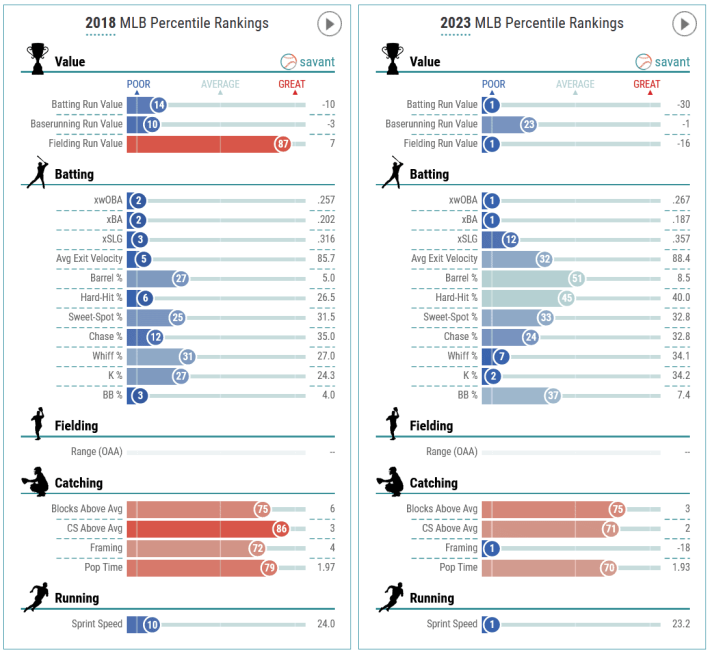
In 2018, Maldonado had a strike rate of 49 percent. In 2023, it dropped to 41 percent, which doesn't seem like it will benefit the team with baseball's second-highest walk rate. The good version of Maldonado couldn't do anything to put a dent in Kansas City's pitching problems, so if this diminished version of Maldonado persists -- which is quite possible since he's 37 -- the White Sox have to guard against a Maldonado who's not cutting it.
The Astros were able to help him mask this last year. While he had worse framing stats than rookie Yainer Diaz, he had the edge in results:
- Maldonado: 3.91 ERA, .709 OPS allowed, 8.3% BB, 24.4% K
- Diaz: 4.06 ERA, .754 OPS allowed, 10.1% BB, 22.7% K
But then you realize that Maldonado caught all 31 of Framber Valdez's starts, all but two of Cristian Javier's starts, and all 11 of Justin Verlander's starts. He was paired with their proven pitchers, whereas Diaz settled for the remainders.
If and when the White Sox trade Dylan Cease, they'll be down to zero proven pitchers. In a scenario where the Sox are this overmatched and Maldonado's best days are behind him, he might be as effective as Zoidberg Jesus.
Now let's pull back from the doomscrolling for a second. The solace is that Maldonado's success with White Sox pitchers isn't entirely dependent on Maldonado or White Sox pitchers. There's also the instruction and information provided to the staff, and I'd like to think the White Sox are ahead of the Royals in this department, especially after the hiring of Brian Bannister.
The Royals in 2019 were just starting to overhaul their approach to pitching, and this three-byline breakdown of the Royals' pitching development failures from The Athletic says while they swapped pitching coaches up top, they didn't immediately grasp things like pitch characteristics, and they were also suspicious of players going outside the organization for help. In an organization where pitchers are promoted on pedigree instead of whether a repertoire possesses MLB-grade pitches, a guy like Maldonado isn't going to make a dent.
Even if you doubt whether Ethan Katz is a difference-maker and want to suspend judgment on Bannister until the results start rolling in, Maldonado should have the information to game-plan accordingly, and maybe he'll also be able to use his Houston experience to tell the Sox what they could be doing better.
The White Sox are going to churn through fringe pitchers while trying to set up rookies for success, so the idea behind Maldonado makes sense. You don't want to pair them with a catcher who's equally in over his head. The goal is to simplify the task for pitchers, coaches and evaluators, and if Maldonado's receiving rebounds close to average along with plus blocking and throwing, they'll be able to remove one variable when assessing whatever goes wrong.
Yet it's worth emphasizing the way Maldonado's receiving deteriorated to make sure that he doesn't become part of the problem. You can't count on Pedro Grifol staying on top of this. He didn't say a thing about the White Sox's game-planning until November, when Yasmani Grandal became a free agent and Grifol could safely throw him under the bus. The next veteran Grifol enforces standards on will be the first.
If I had to guess, I'd say the impact of the Maldonado/Max Stassi pairing will be negligible, aside from helping Chris Getz in his mission to get 2024 White Sox games over with as fast as possible. Most of the numbers will probably be ugly, but the soft skills will probably be raved about, and it's up to the discerning reader to balance one against the other. That said, when the White Sox emphasize leadership and other intangibles to paper over red flags in performance, they oftentimes end up subtracting their addition well before they'd imagined, and here's an acknowledgement of that outcome in case it's needed by Memorial Day.
